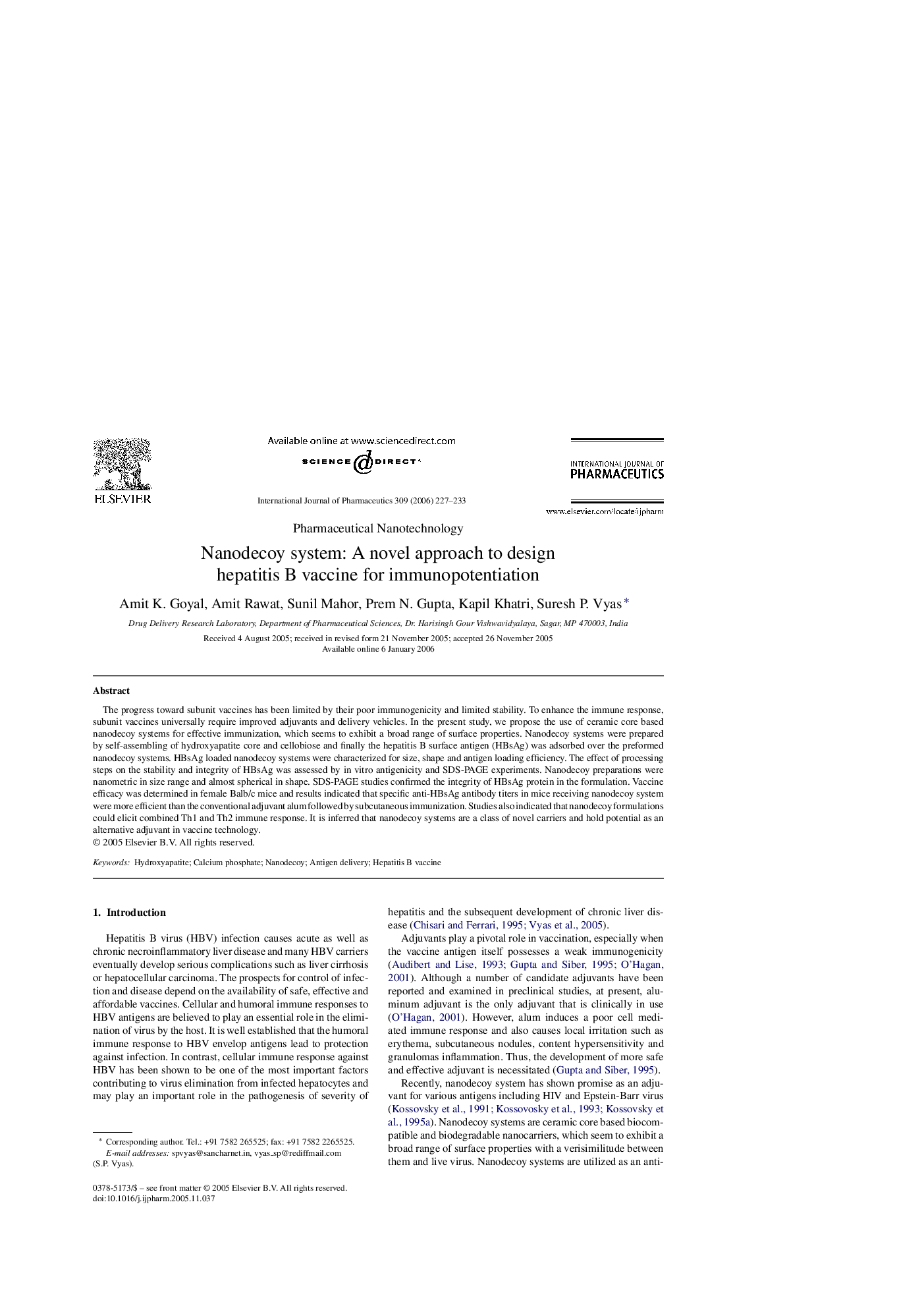| Article ID | Journal | Published Year | Pages | File Type |
|---|---|---|---|---|
| 2507145 | International Journal of Pharmaceutics | 2006 | 7 Pages |
The progress toward subunit vaccines has been limited by their poor immunogenicity and limited stability. To enhance the immune response, subunit vaccines universally require improved adjuvants and delivery vehicles. In the present study, we propose the use of ceramic core based nanodecoy systems for effective immunization, which seems to exhibit a broad range of surface properties. Nanodecoy systems were prepared by self-assembling of hydroxyapatite core and cellobiose and finally the hepatitis B surface antigen (HBsAg) was adsorbed over the preformed nanodecoy systems. HBsAg loaded nanodecoy systems were characterized for size, shape and antigen loading efficiency. The effect of processing steps on the stability and integrity of HBsAg was assessed by in vitro antigenicity and SDS-PAGE experiments. Nanodecoy preparations were nanometric in size range and almost spherical in shape. SDS-PAGE studies confirmed the integrity of HBsAg protein in the formulation. Vaccine efficacy was determined in female Balb/c mice and results indicated that specific anti-HBsAg antibody titers in mice receiving nanodecoy system were more efficient than the conventional adjuvant alum followed by subcutaneous immunization. Studies also indicated that nanodecoy formulations could elicit combined Th1 and Th2 immune response. It is inferred that nanodecoy systems are a class of novel carriers and hold potential as an alternative adjuvant in vaccine technology.
